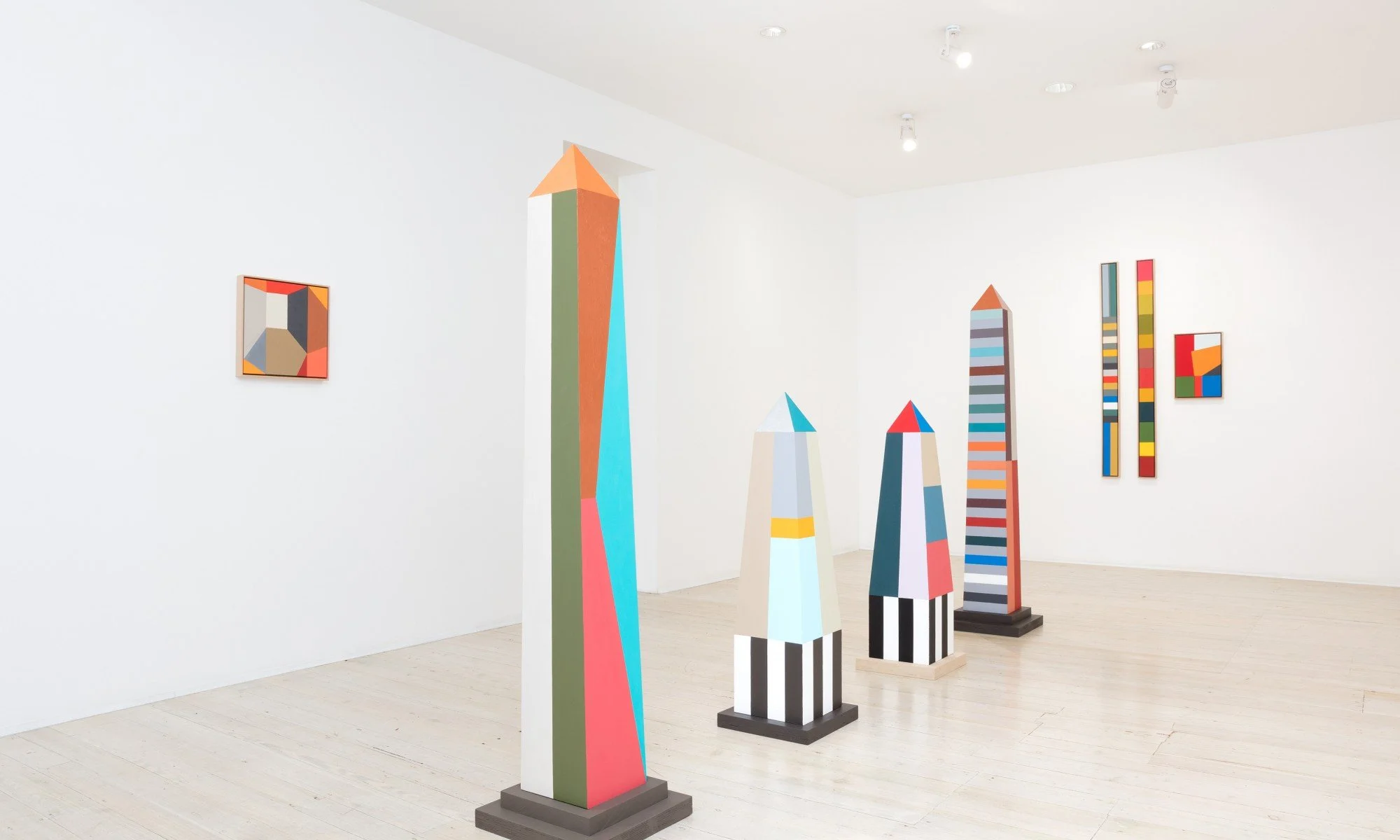Louise Tuckwell
Parallelisms
ESSAY | gallery 9 | september 2020
Capturing the vast geometric potential of the everyday, Louise Tuckwell’s works are an exercise in equilibrium. The artist speaks a geometric language honed over decades, always inspired by the non-objective artists she discovered in the mid 1980s including Agnes Martin, John Nixon, Peter Atkins, Allan Mitelman, Nigel Hall and Joe Felber. There is a musical valency to her works, a kind of abstract notation deconstructing sound into a symbiosis of colour and shape. Full-shaped baritones rub up against lineal tenors in an optical orchestra that plays, quietly, within the union of shapes.
In her quest for harmony, Tuckwell siphons inspiration from Ancient Greek systems of mathematics and beauty. The paintings emblemise the ‘golden mean’, the ideal mid-point between excess and deficiency; beauty and truth. Entwined with mathematics, this philosophy sees three ingredients to beauty: symmetry, proportion, and harmony, which Tuckwell consciously enlists in her formalist plays of colour, shape and line. Simultaneously she taps into the geometric work of Ancient Greek mathematician Euclid, whose systems of logic, opposing axioms and plane geometry form the theoretical kernel of Tuckwell’s hard-edged abstractions. The paintings find a paradoxical harmony in their tightly choreographed expressions of systematic surprise and intuitive logic. They are at once expressive and restrained, drawing us into their push and pull orbit between that which is revealed and that which is concealed.
The edge in these paintings is not a precipice but a beginning, a conduit to new constellations of meaning and logic. Though they are proudly non-objective, Tuckwell’s works are also mindscapes, prismatic refractions of the way the artist sees the world. Suggestion congregates with surprise as clever colouration tricks the eye into reading spatiality and depth. Shadows seem to stretch from architectural facades, buildings, objects and horizons – distillates of Tuckwell’s surroundings. Yet overshadowing these glimmers of three-dimensional form is a proud, non-objective flatness that hints at the catharsis of letting go; of recognition, and of control. Doing away with representations of foreground and background, Tuckwell symbolically negates the notion of temporal distance, suggesting that everything exists in the here and now. Pace slows down as you spend time with the works, watching their bright tectonic plates mingle in perfect junction.
Tuckwell’s new series of sculptures extends the architectural cadences of her paintings. The crisp edges of her abstract geometries and their intimations of shadow are physicalised in the sculptural planes, which must be encircled to be properly read. Yet Tuckwell avoids any ‘over-reading’ of her compositions; she is simply celebrating the vivacious possibilities of colour and shape. These works are totems to the pleasure of beauty. They are built without preconception, tapping into that intuitive stream between head and hand, imagination and realisation. Intersecting diagonals, dense colour juxtapositions and subtle perspectival shifts build a visual vocabulary that speaks of the wonderment to be found in simplicity. The pure joy of paint, shape, colour. Here, we glimpse the catharsis of geometry; its offering of calm and quietude.
